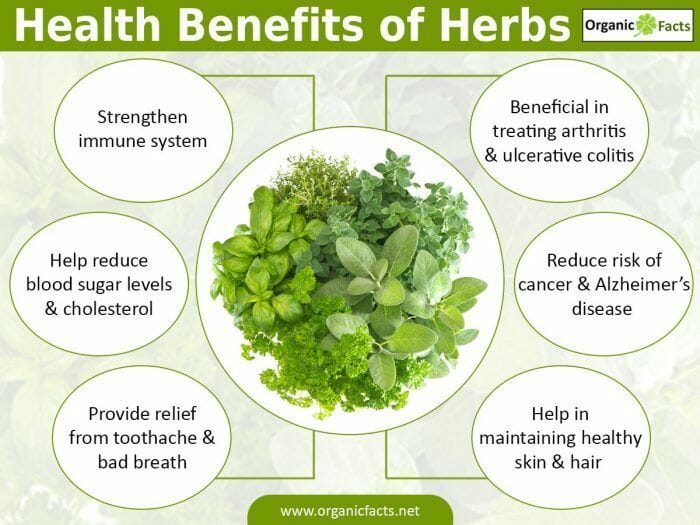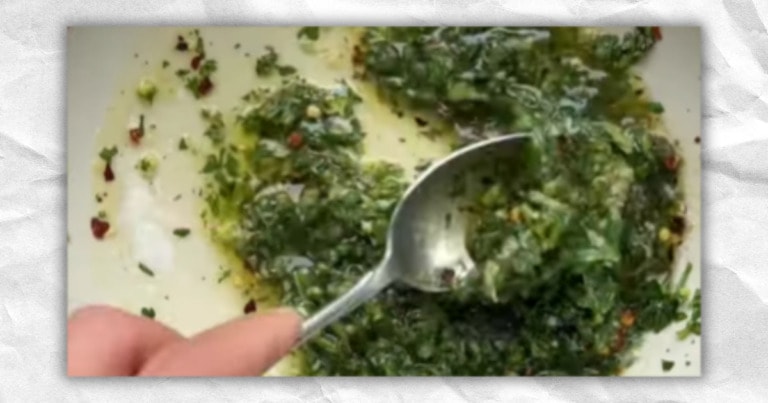
What are the most aromatic herbs? Whether you’re a budding chef or simply love the smell of freshly picked herbs, you’ve come to the right place! Today, we’re diving into the world of fragrant herbs and exploring which ones tantalize our senses the most. So, get ready to embark on a flavorful journey that will leave your taste buds tingling and your kitchen smelling amazing!
When it comes to aromatic herbs, they not only add a burst of flavor to your dishes but also infuse your home with delightful scents. From the earthy freshness of basil to the zesty aroma of mint, these herbs have the power to transform any meal into a culinary masterpiece. So, let’s dig in and discover the top contenders for the title of the most aromatic herbs.
Exploring the Aromatic World of Herbs
These flavorful herbs add a burst of fragrance to any dish. From fresh basil and thyme to zesty mint and rosemary, explore a variety of aromatic options to enhance your cooking. These herbs not only provide exquisite tastes but also infuse your kitchen with delightful scents. Get ready to tantalize your taste buds and impress your guests with the incredible aromas of these herbs!
1. Basil
Basil, with its intoxicating aroma reminiscent of cloves and mint, is a staple in many culinary traditions. Originating from Asia, this herb has found its way into cuisines worldwide. Whether used in pesto sauces, pasta dishes or as a garnish for salads, basil adds a vibrant and irresistible fragrance to any dish.
Its essential oils, present in its leaves and stems, are responsible for its delightful scent, making it one of the most sought-after aromatic herbs.
In addition to its incredible fragrance, basil also boasts numerous health benefits. It is known to have antibacterial and anti-inflammatory properties and contains high levels of antioxidants. Basil can aid digestion and provide relief from stress. It’s easy to grow fresh basil in your garden or even indoors, ensuring a constant supply of this aromatic herb throughout the year.
From traditional Italian cuisine to innovative fusion recipes, basil has secured its position as the emperor of aromatic herbs. Its versatile and intoxicating aroma elevates dishes to new heights, making it a must-have in every culinary enthusiast’s herb garden.
2. Lavender
Lavender, with its delicate purple flowers and soothing scent, is synonymous with relaxation and tranquility. This aromatic herb has been used for centuries in beauty products, essential oils, and culinary creations. Its unique fragrance, which combines floral, herbal, and slightly sweet notes, makes it a popular choice for both aromatherapy and culinary applications.
In culinary pursuits, lavender lends a fragrant twist to baked goods, desserts, and even savory dishes. Its floral and herbaceous flavors enhance the taste of everything from cookies and cakes to roasted vegetables and grilled meats. As a bonus, lavender is believed to have calming properties and can help alleviate anxiety and sleep-related issues.
Lavender can easily be grown in gardens or pots, creating a visual and aromatic oasis in your home. With its versatility and calming aroma, this herb is a delightful addition to any herb garden, bringing a touch of elegance and tranquility to your culinary endeavors.
3. Lemongrass
Lemongrass, with its refreshing citrusy scent, adds a delightful zing to a variety of dishes. This perennial herb, native to Southeast Asia, is a staple in Thai, Vietnamese, and Indonesian cuisines. Its intense aroma, reminiscent of lemon with a hint of ginger, brings a burst of freshness to soups, curries, stir-fries, and teas.
Apart from its aroma, lemongrass offers several health benefits. It is known to possess anti-inflammatory and antibacterial properties and can aid in digestion. Lemongrass tea is particularly popular for its soothing effects.
Growing lemongrass in your garden or a pot is relatively easy. With its citrusy zest and versatile uses, lemongrass is a valuable addition to any herb collection, infusing dishes with an invigorating aroma and tangy flavor.
4. Rosemary
Rosemary, with its woody and aromatic fragrance, is an herb that exudes elegance and resilience. Native to the Mediterranean region, this versatile herb thrives in sandy soil and sunny conditions, making it a popular choice for gardeners. Its distinct aroma, reminiscent of pine and lemon, lends a robust and earthy flavor to a wide range of dishes.
In culinary applications, rosemary pairs well with roasted meats, potatoes, and vegetables, infusing them with its aromatic intensity. It can also be incorporated into marinades, bread, and even cocktails. Beyond its culinary uses, rosemary is known for its potential cognitive and memory-enhancing properties. The scent of rosemary has been linked to increased alertness and improved concentration.
Thanks to its hardy nature, rosemary is a resilient herb that can thrive in various climates. Its versatility and distinctive aroma make it a prized herb in the culinary world, adding depth and complexity to dishes and enchanting the senses with every whiff.
5. Mint: The Cool and Invigorating Aroma of Refreshment
Mint, with its invigorating scent and cooling properties, is one of the most beloved and versatile herbs in the world. Its aroma blends the freshness of spearmint and the coolness of peppermint, creating a delightful fragrance that uplifts the spirits and awakens the senses. Mint is widely used in both sweet and savory dishes and beverages, offering a refreshing twist to a variety of culinary creations.
From classic mint juleps and mojitos to salads, sauces, and desserts, mint adds a burst of flavor and aroma to countless recipes. It is also widely used in teas and infusions, promoting digestive health and providing relief from common ailments such as indigestion and headaches.
Mint is a prolific herb that can be grown easily in home gardens, offering a constant supply of this vibrant and aromatic herb. Whether crushed in cocktails or delicately torn in salads, mint is a must-have herb that will infuse your dishes with a cool and invigorating touch of freshness.
6. Cilantro: Vibrant Herb with an Exotic Twist
Cilantro, known as coriander in some parts of the world, is an herb that divides opinions. Some adore its fresh and citrusy scent, while others find its flavor overpowering. Regardless of personal preference, cilantro is an herb that cannot be ignored due to its immense culinary significance.
Cilantro leaves, often used as a garnish in many cuisines, possess a unique fragrance that is simultaneously aromatic and pungent. This herb is a common ingredient in Latin American, Asian, and Middle Eastern cuisines, where it adds depth and vibrancy to salsas, curries, salads, and soups.
While cilantro’s flavor may not appeal to everyone, it is undeniably a versatile and culturally significant herb. Don’t shy away from experimenting with cilantro in your cooking, as it can be the difference between a mediocre dish and a culinary triumph.
7. Thyme: Aromatic Herb with Ancient Roots
Thyme, with its warm and earthy aroma, has been used since ancient times for its medicinal and culinary properties. Native to the Mediterranean region, thyme offers a unique blend of herbal and floral notes, making it a cherished herb in various cuisines across the globe.
In culinary pursuits, thyme pairs exceptionally well with roasted meats, stews, and sauces. Its distinct flavor and aroma enhance the richness of savory dishes, adding depth and complexity. Thyme also possesses potential health benefits, including antioxidant properties and potential anti-inflammatory effects.
Growing thyme is relatively straightforward, and it thrives in well-drained soil and sunny conditions. By incorporating this aromatic herb into your herb garden, you can add a touch of Mediterranean charm to your culinary adventures.
Savoring the Aromas of Nature
The world of aromatic herbs offers an enchanting sensory experience, elevating dishes and captivating our senses. From the fragrant basil that reigns supreme in Italian cuisine to the invigorating zest of lemongrass and the earthy elegance of rosemary, these herbs contribute not only tantalizing scents but also an array of health benefits and culinary possibilities.
Whether you choose to cultivate these herbs in your garden, add them to your spice rack, or experiment with them in your recipes, the aromatic journey they offer is one filled with delight, creativity, and an appreciation for the wonders of nature. Embrace the fragrant world of herbs and let their aromas bring joy and sensory pleasure to your culinary adventures.
Frequently Asked Questions
Are you curious to know about the most aromatic herbs? Look no further! In this section, we’ll explore the fragrant wonders of the herb world.
What are some of the most aromatic herbs?
When it comes to aromatic herbs, a few favorites stand out. Rosemary, with its pine-like fragrance, is often used to add a burst of flavor to savory dishes. Basil, known for its sweet and slightly peppery scent, is a staple in Italian cuisine.
Mint, with its refreshing aroma, is perfect for adding a refreshing touch to both savory and sweet recipes. Thyme, with its earthy and slightly floral fragrance, is frequently used to enhance the flavors of roasted meats and vegetables. Finally, lavender, with its calming and floral scent, is not only used in cooking but also for its soothing properties in bath products and teas.
These herbs are just the tip of the iceberg when it comes to aromatic wonders. Explore the vast world of herbs, and you’re sure to find many others that tantalize your senses with their delightful scents.
How can I use aromatic herbs in my cooking?
Aromatic herbs are incredibly versatile in the kitchen. You can use them to infuse your dishes with delightful flavors and fragrances. Here are a few suggestions for incorporating aromatic herbs into your cooking:
- Fresh herbs: Add freshly chopped aromatic herbs to enhance the flavor of your salads, soups, sauces, and marinades. Sprinkle them over your finished dishes as a garnish for an added burst of aroma.
- Herb-infused oils: Create your herb-infused oils by steeping aromatic herbs in olive or vegetable oil. Use these flavorful oils for cooking, dressings, or drizzling over roasted vegetables or bread.
- Herbal teas: Aromatic herbs like mint, chamomile, and lavender can be used to brew refreshing herbal teas. Steep the herbs in hot water, strain, and enjoy a comforting cup of aromatic goodness.
Be creative and experiment with different combinations of herbs in your cooking. The possibilities are endless!
Do aromatic herbs have any health benefits?
Aromatic herbs not only add delightful scents and flavors to your dishes but also provide some health benefits. For example, mint is known for its digestive properties and can soothe an upset stomach. Basil contains compounds that have antibacterial properties. Rosemary, thyme, and lavender have antioxidant properties that may help protect the body against free radicals.
However, it’s important to note that the health benefits of herbs vary, and they should not be used as a substitute for medical advice or treatment. It’s always best to consult with a healthcare professional before using herbs specifically for medicinal purposes.
Can I grow aromatic herbs at home?
Absolutely! Growing aromatic herbs at home is a delightful and rewarding experience. Many aromatic herbs can be easily grown in containers or in small herb gardens. Here are a few tips for successfully growing aromatic herbs:
- Choose the right location: Most aromatic herbs thrive in sunny locations, so choose a spot that receives at least 6-8 hours of sunlight each day.
- Provide well-drained soil: Aromatic herbs prefer well-draining soil, so make sure to use a good quality potting mix or amend your garden soil with organic matter.
- Water appropriately: Aromatic herbs like to be kept slightly on the drier side. Water them when the top inch of soil feels dry, but avoid overwatering.
With a little care and attention, you can have your very own aromatic herb garden, ready to be harvested whenever you need to add a fragrant touch to your culinary creations.
Are aromatic herbs easy to preserve for future use?
Preserving aromatic herbs is an excellent way to enjoy their delightful scents and flavors even when they are out of season. Here are a few methods for preserving aromatic herbs:
- Drying: Tie bundles of aromatic herbs, such as rosemary or thyme, together and hang them upside down in a warm, well-ventilated area until they are completely dry. Once dry, remove the leaves from the stems and store them in airtight containers.
- Freezing: Chop aromatic herbs like basil or mint and freeze them in ice cube trays filled with water or oil. Once frozen, transfer the herb cubes to freezer bags or containers. This allows you to easily add a burst of flavor to your dishes whenever needed.
- Infused salts and sugars: Combine aromatic herbs with salt or sugar to create flavorful infused salts or sugars. These can be used to season dishes or add a hint of sweetness to baked goods.
By preserving your aromatic herbs, you can enjoy their flavors and scents long after the growing season has ended.
So, now you know about the most aromatic herbs! There are many of them, like mint, rosemary, and basil. These herbs smell great and can make your food taste even better. You can grow them in your garden or buy them at the store. Just remember to use them in moderation, because they can be strong. Experiment with different herbs to find your favorite flavors. Happy cooking!



